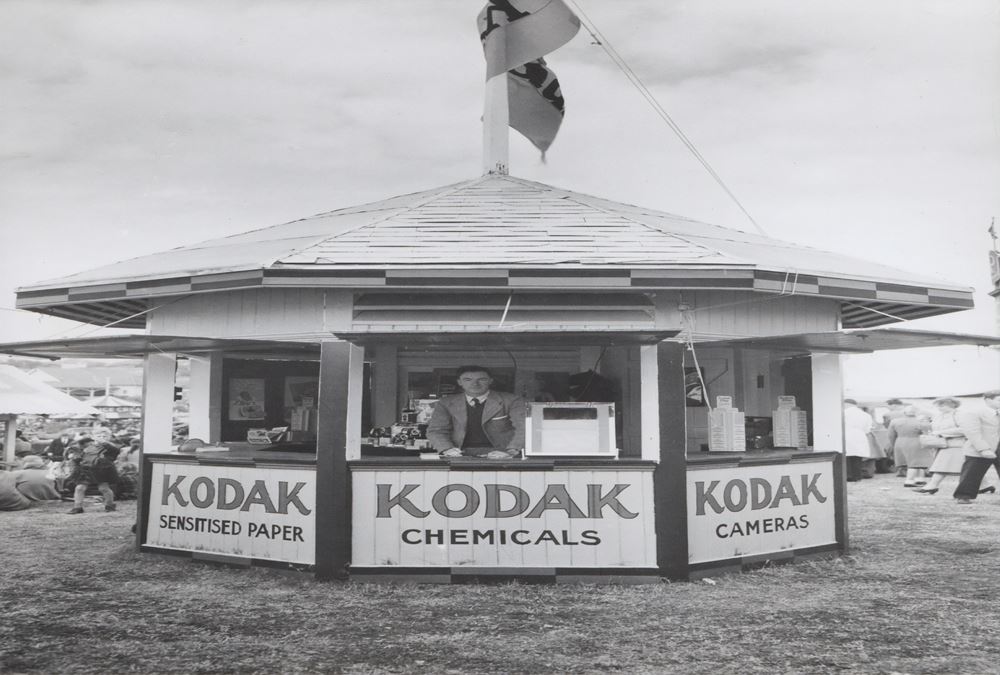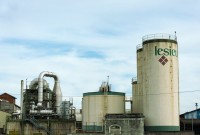- Home
- Business Processes
- Industry Knowledge
- Aerospace Industry
- Automotive Industry
- Banking Domain
- BFSI Industry
- Consumer/ FMCG Industry
- Chemicals Industry
- Engineering & Construction
- Energy Industry
- Education Domain
- Finance Domain
- Hospitality Domain
- Healthcare Industry
- Insurance Domain
- Retail Industry
- Travel and Tourism Domain
- Telecom Industry
- Leadership Skills
- eLearning
- Home
- Domain Knowledge
- Chemicals Industry
- History of Chemicals Industry
History of Chemicals Industry
This article provides a concise history of the chemicals industry. How the chemical industry progressed and changed over time. Explore the journey of the Chemical industry from the early ages to the twenty-first century. Chemicals have been manufactured for thousands of years. The history of the chemicals industry can be traced back to ancient times when alkali and limestone were combined to make glass, and sulfur and saltpeter became an explosive that is similar to modern gunpowder.
The Early Years of Chemical Industry:
Chemicals have been manufactured for thousands of years. The history of the chemicals industry can be traced back to ancient times when alkali and limestone were combined to make glass, and sulfur and saltpeter became an explosive that is similar to modern gunpowder. Middle Eastern artisans used to refine alkali and limestone for the production of glass in as early as 7,000 B.C. and Phoenicians produced soap in the 6th century B.C. The Chinese developed black powder around the 10th century A.D, and it was used as a primitive explosive. In the middle ages, alchemists produced small amounts of chemicals and by 1635 the Pilgrims in Massachusetts were producing saltpeter for gunpowder and chemicals for tanning. But, large-scale chemical industries first developed in the 19th cent.
Industrial Revolution:
The emergence of the chemical industry as an independent branch is associated with the industrial revolution. The first sulfuric acid plants were built in Great Britain in 1740 (Richmond), France in 1766 (Rouen), Russia in 1805 (Moscow Province), and Germany in 1810 (near Leipzig). The development of the textile and glass industries prompted the initiation of soda production. The first soda plants were built in France in 1793 (near Paris), Great Britain in 1823 (Liverpool), Germany in 1843 (Schönebeck), and Russia in 1864 (Barnaul). In the mid-19th century, artificial fertilizer plants appeared in Britain (1842), Germany (1867), and Russia (1892).
In 1823, British entrepreneur James Muspratt started mass producing soda ash (needed for soap and glass) using a process developed by Nicolas Leblanc in 1790. Further advances in organic chemistry in the last half of the 19th century, allowed companies to produce synthetic dyes from coal tar for the textile industry as early as the 1850s. In the 1890s, German companies began mass-producing sulfuric acid, and, at about the same time, chemical companies began using the electrolytic method, which required large amounts of electricity and salt, to create caustic soda and chlorine.
The Nineteenth Century:
The Industry did not begin on a massive scale until the 19th century when advancements in organic chemistry made the production of synthetic dyes from coal tar possible. By World War II, petrochemicals were being used in the United States to produce plastics and fibers. Petrochemicals are chemical products derived from oil or natural gas. Polymer science and chemical engineering were becoming the driving forces of the industry. Polymer science uses petrochemicals to make products such as plastics, resins, paints, and adhesives. Chemical engineering made the production of such products possible and at a low enough cost to be profitable. After World War II, the industry experienced a shift in production from organic chemicals, such as coal, to petrochemicals.
Extensive ties with many countries of the world for commerce in raw materials and the early formation of an advanced industry gave Great Britain the leading position in chemical production during the first three-quarters of the 19th century. By the end of the century, industry leadership had shifted to Germany. The rapid process of concentration in the chemical industry, the high level of scientific and technological development, the strengthening of the monopoly on patents, and commercial politics led to Germany’s conquest of the world market. Until World War I, it retained a monopoly on the production of organic dyes and intermediates. The chemical industry in the USA began developing appreciably later than in the European countries, but as early as 1913 the USA led the world in volume of chemical production as a result of the country’s extremely rich mineral resources, well-developed transportation systems, and large domestic market, as well as its exploitation of the experience of other countries.
The Early Twentieth Century:
Man-made fibers changed the textile industry when rayon (made from wood fibers) was introduced in 1914; the introduction of synthetic fertilizers by the American Cyanamid Company in 1909 led to a green revolution in agriculture that dramatically improved crop yields. Advances in the manufacture of plastics led to the invention of celluloid in 1869 and the creation of such products as nylon by Du Pont in 1928. Research in organic chemistry in the 1910s allowed companies in the 1920s and 30s to begin producing chemicals for oil. Today, petrochemicals made from oil are the industry's largest sector. Synthetic rubber came into existence during World War II when the war cut off supplies of rubber from Asia.
Among the economically developed capitalist countries, the principal producers of chemicals are the USA, Japan, the Federal Republic of Germany, France, Great Britain, and Italy. They contribute approximately three-fourths of the capitalist output of chemical products. The development of the chemical industry has proceeded extremely unevenly; as a result, significant changes have occurred in the relative production capacities of the chemical industries of these countries.
The Late Twentieth Century:
In the postwar years, the USA’s position as a leader among the capitalist countries in chemical production was weakened. In 1950 the USA accounted for 54 percent of the total capitalist production; in 1973 it accounted for only 35 percent. In the 1960s Japan and the Federal Republic of Germany advanced to second and third places, respectively, in the volume of chemical production.
In the 1960s, there was an increase in the production of organic chemicals from oil and natural gas. Many oil companies, such as BP, Shell, and Exxon, also began producing chemicals that were derived from petroleum feedstock. During the 1970s, oil prices increased drastically, which increased the cost of manufacturing petrochemicals and polymers. Many chemical companies began to diversify. The oil crisis eventually created a consolidation in the industry as increased costs, lowered economic activity, and a reduced rationalization for investing in major product innovations took hold of the industry.
Industrial Disaster of Bhopal:
In 1984, the worst industrial disaster in history occurred when toxic chemicals leaked from a Union Carbide plant in Bhopal, India. It was the worst industrial disaster in history and heightened public concern about lax environmental regulations for chemical companies in developing countries. This disaster led to a period of increased regulations to protect the air, water, and soil from chemical contamination.
Growth of Chemical Industry in Developing Nations:
Beginning in the 1980s, U.S. corporations faced expanding competition from foreign producers, including some Third World oil producers who have set up their own oil refining and petrochemical industries. In 1997 the U.S. chemical industry produced about $389 billion worth of products and employed 1,032,000 workers. It exported about $71 billion worth of chemicals. During the 1990s, intense growth in the industry began to take place in developing regions, such as South Korea, Taiwan, Eastern Europe, and the Middle East.
The Twenty-first Century:
By this century, companies in the chemical industry include large, medium, and small companies located all over the world. Companies grew with their sales of chemical products and many companies had sales greater than $10 billion dollars and for some of these companies the chemical sales represented only a portion of their total sales. The chemicals industry established its importance in national economies and grew to about $3.7 trillion USD in sales. Millions of people got employed by the chemicals industry in production, research, and development, as well as chemists, engineers, and technicians. Though the business of chemistry is worldwide in scope, the bulk of the world’s $3.7 trillion chemical output is accounted for by only a handful of industrialized nations. The United States alone produced $689 billion, 18.6 percent of the total world chemical output in 2008.
Related Links
You May Also Like
-
This article provides a concise history of the chemicals industry. How the chemical industry progressed and changed over time. Explore the journey of the Chemical industry from the early ages to the twenty-first century. Chemicals have been manufactured for thousands of years. The history of the chemicals industry can be traced back to ancient times when alkali and limestone were combined to make glass, and sulfur and saltpeter became an explosive that is similar to modern gunpowder.
-
Importance / Impact of Chemicals Industry
Chemical Industry is engaged in the development, optimization, and monitoring of fundamental chemical processes used in industry for transforming raw materials and precursors into useful commercial products for society. Learn more about the importance and impact of the chemical industry on agriculture, environment, hygiene, food, painting, etc.
-
Fundamentally, the chemicals industry can be divided into two sectors; commodity/basic chemicals and specialty chemicals. Commodity chemicals are manufactured by many different companies however the end product is generally the same with very little variations. There exist other segmentations for this industry as well. Understand the main sectors of the chemical domain.
-
Overview of Chemicals Industry
The chemical industry is critical for the economic development of any country, providing products, and enabling technical solutions in virtually all sectors of the economy. This article provides an overview of the chemical industry, explaining the definition and processes in the chemical domain. Read about the various segments of the chemical industry and what they do. A brief discussion on the major players in the chemical domain and their impact on the global and US economy.
-
Industry trends are examined to make predictions. This article discusses the trends in the chemicals industry including trends related to consumer behavior, employment, technological advancements, new product development, competition, government norms, and other factors that impact the industry.
-
Business Model & Value Chain of Chemicals Industry
Understand the three critical business models applied by the Chemicals Industry to create value for its customers; asset-driven business model, integrated business model, and specialties business model. This article also explains the chemical industry value chain and provides some practical examples for a better understanding.
-
Chemicals Industry’s Supply Chain
This article explains the chemical industry supply chain and addresses key questions like the importance of supply chain management and why the chemicals industry needs to focus on supply chain management. Understand the key factors influencing the supply chain for the chemicals industry and strategies to overcome the current challenges.
Explore Our Free Training Articles or
Sign Up to Start With Our eLearning Courses

About Us
Learning
© 2023 TechnoFunc, All Rights Reserved







